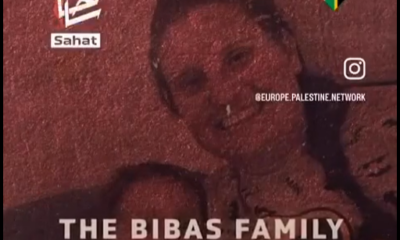World
Building bridges through genealogy research
“The size of the Holocaust is so big, it is incomprehensible. I wanted to individualise it by understanding how the atrocity touched particular families.”
ROBYN SASSEN
In pockets in Europe, interest is growing in researching family trees of Holocaust victims. “Bridges are being built,” said Claus-Dieter Richter-Kraneis through a translator, last week, at the Johannesburg Genealogical Society.
Richter-Kraneis lives in Wesel, a city in North Rhine-Westphalia, Germany. He worked for a chemical company until his retirement. He’s also been instrumental in bridging gaps in the family history of three Johannesburg residents, Sonya Abelson (born Gunther), whose family he started researching in 2006 and her cousin Frank Haymann and his wife Carol (née Rapoport) whose families he started researching in 2010, and who he has managed to track all the way back to 1750.
Giving an account of family members whose birth and death records he discovered, Richter-Kraneis opened up an area of previously hidden secrets. “I’m interested in the fight to outlaw racism, anti-Semitism and Holocaust denialism,” he wrote in his CV. He came upon the family in question “by fluke” according to Abelson.
“The size of the Holocaust – six million Jewish victims – is so big, it is incomprehensible. I wanted to individualise it by understanding how the atrocity touched particular families.”
Each year, since 1999, he has been visiting cites of Nazi atrocities during the Holocaust, as an advocate for Holocaust history and to research. The artist Gunter Demnig has, since 1996, been involved in installing 10x10x10cm cast concrete stones, with inset brass plaques in several European cities, called stolpesteine (“stumbling blocks”) to commemorate the former homes of Jews who became victims of the Nazi era. To date, some 27 000 stolpesteine have been installed all over Europe.
Wesel’s senior high school learners under the guidance of Richter-Kraneis, are assigned to research the records of the people whose names are on the “stolpesteine”.
The stones, paid for by civilians, are embedded in the sidewalks in front of the former residences; each stone’s inscription begins with the words “lived here”, followed by the name, date of birth, possibly the date of escape from Europe or the date and place of death.
“It is a patchwork of research,” added Tali Nates, director of the Johannesburg Holocaust and Genocide Centre, “but interest in it is picking up all over Europe.”
- To access further information relating to Poland, click here: JEWISH REGISTRY INDEX FOR POLAND
- For different European countries, click to e-mail THULI at the JH&GC and she will help you


